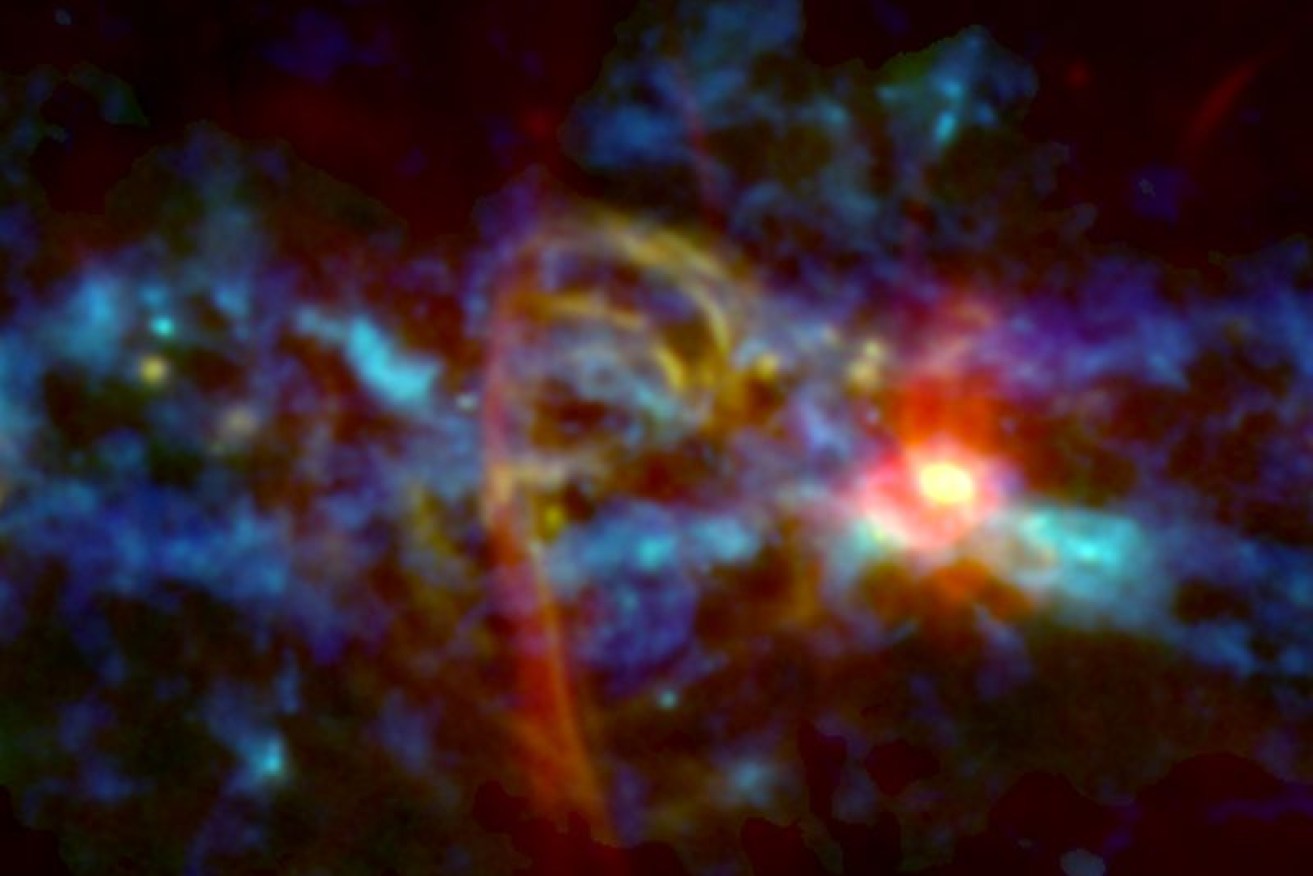NASA finds the Milky Way strung with Christmas lights


The "candy cane" at the heart of our galaxy is a magnetic structure called the Radio Arc. Photo:NASA’s Goddard Space Flight Center
Just before Christmas those attention-seeking nerds at NASA announced they had discovered a giant candy cane at the centre of the Milky Way.
What they failed to mention was the super-charged heart of our galaxy being strung with Christmas lights.
The magic is courtesy of evolving technologies that allow us to see more of the universe, not just the small spectrum of light that can be processed by the human brain.
As a statement from the University of California, Los Angeles (UCLA) explains it:
“Many of the universe’s secrets are being revealed through the parts of the electromagnetic spectrum of light that are not visible to the human eye. The electromagnetic spectrum encompasses the complete range of light — seen and unseen — from gamma rays, X-rays and ultraviolet light on one end to infrared and radio waves on the other.”
The new image shows the inner part of our galaxy, which houses the largest, densest collection of giant molecular clouds in the Milky Way.

This image of the inner galaxy colour codes different types of emission sources by merging microwave data (green) with infrared (850 micrometers, blue) and radio observations (19.5 centimeters, red). Image: NASA’s Goddard Space Flight Centre
The candy cane is an illusion created by two structures: the long, straight main-piece is known as the Galactic Centre Radio Arc (an immense radio-wave transmitter); the Arches make up the handle of the cane (those wispy filaments make up a densely packed star nursery).
The Radio Arc is a dynamic structure which, says NASA, “spans 190 light-years and is one of a set of long, thin strands of ionised gas called filaments that emit radio waves”.
According to Dr Mark Morris, a UCLA professor of astronomy and physics, and part of the research team, the new image of the arc allows us to “literally see the magnetic field lines illuminated by the radio emission”.
It’s a big deal for Dr Morris, given he was one of the scientists to discover the Radio Arc in 1983. The other scientist, Dr Morris’ student at the time, and now a professor at Northwestern University, Dr Farhad Zadeh, took this image of the Radio Arc in 2002.

According to NASA, from 2002, the long parallel rays slanting across the top of the above radio image are known collectively as the Galactic Centre Radio Arc and jut straight out from the Galactic plane. Image: Farhad Zadeh et al
To produce the new image, the astronomers used a NASA 2-millimeter camera instrument called GISMO, along with a 30-meter radio telescope located at Pico Veleta, Spain.
They also took archival observations from the European Space Agency’s Herschel satellite to model the infrared glow of cold dust.
They added infrared data from the SCUBA-2 instrument at the James Clerk Maxwell Telescope near the summit of Maunakea, Hawaii, and radio observations from the National Science Foundation’s Very Large Array, located near Socorro, New Mexico.
According to UCLA, the blue and greenish-blue features in the image reveal cold dust in molecular clouds where star formation is still in its infancy. Yellow features reveal the presence of ionised gas and show where hundreds of massive stars have recently formed.
Red and orange regions show areas where high-energy electrons emit radiation by a process called “synchrotron emission,” such as in the radio arc and Sagittarius A, the bright source at the galaxy’s centre that hosts its supermassive black hole, about 27,000 light-years away from us.
In the middle is the small visible spectrum that includes the colours humans can detect with the unaided eye. Gamma rays have wavelengths billions of times smaller than those of visible light, while radio waves have wavelengths billions of times longer than those of visible light.
The view spans a part of the sky about 1.6 degrees across – equivalent to roughly three times the apparent size of the Moon – or about 750 light-years wide.








